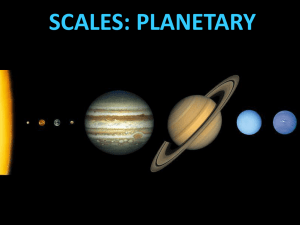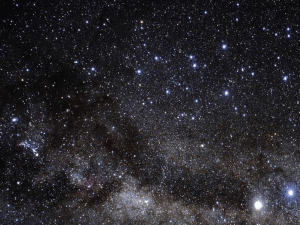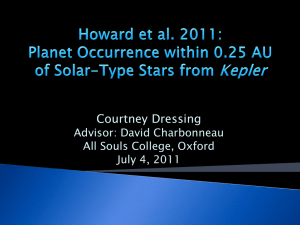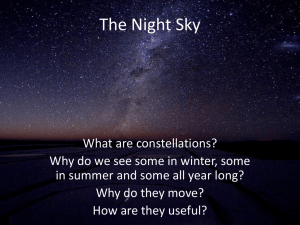Planets and Stars Key Vocabulary
advertisement
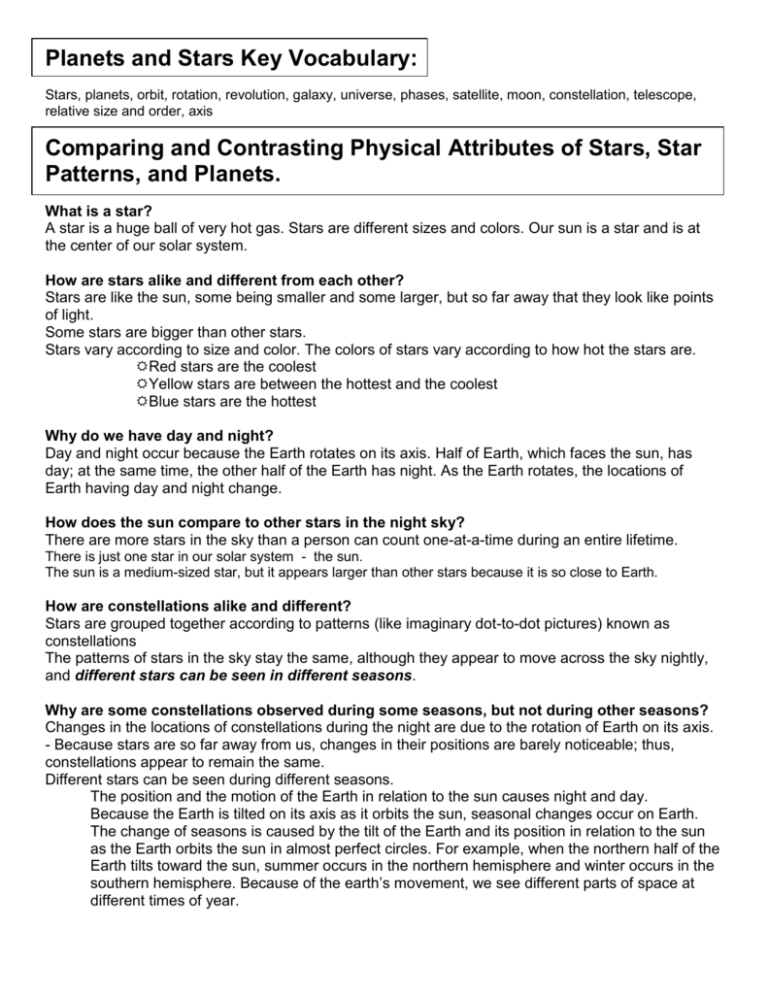
Planets and Stars Key Vocabulary: Stars, planets, orbit, rotation, revolution, galaxy, universe, phases, satellite, moon, constellation, telescope, relative size and order, axis Comparing and Contrasting Physical Attributes of Stars, Star Patterns, and Planets. What is a star? A star is a huge ball of very hot gas. Stars are different sizes and colors. Our sun is a star and is at the center of our solar system. How are stars alike and different from each other? Stars are like the sun, some being smaller and some larger, but so far away that they look like points of light. Some stars are bigger than other stars. Stars vary according to size and color. The colors of stars vary according to how hot the stars are. Red stars are the coolest Yellow stars are between the hottest and the coolest Blue stars are the hottest Why do we have day and night? Day and night occur because the Earth rotates on its axis. Half of Earth, which faces the sun, has day; at the same time, the other half of the Earth has night. As the Earth rotates, the locations of Earth having day and night change. How does the sun compare to other stars in the night sky? There are more stars in the sky than a person can count one-at-a-time during an entire lifetime. There is just one star in our solar system - the sun. The sun is a medium-sized star, but it appears larger than other stars because it is so close to Earth. How are constellations alike and different? Stars are grouped together according to patterns (like imaginary dot-to-dot pictures) known as constellations The patterns of stars in the sky stay the same, although they appear to move across the sky nightly, and different stars can be seen in different seasons. Why are some constellations observed during some seasons, but not during other seasons? Changes in the locations of constellations during the night are due to the rotation of Earth on its axis. - Because stars are so far away from us, changes in their positions are barely noticeable; thus, constellations appear to remain the same. Different stars can be seen during different seasons. The position and the motion of the Earth in relation to the sun causes night and day. Because the Earth is tilted on its axis as it orbits the sun, seasonal changes occur on Earth. The change of seasons is caused by the tilt of the Earth and its position in relation to the sun as the Earth orbits the sun in almost perfect circles. For example, when the northern half of the Earth tilts toward the sun, summer occurs in the northern hemisphere and winter occurs in the southern hemisphere. Because of the earth’s movement, we see different parts of space at different times of year. How are planets and stars alike and different in relation to appearance, position, and number in the night sky? When viewed through a telescope or binoculars, planets are not as bright as stars. In addition, planets appear as disks, whereas, stars look like fuzzy lights. Planets and stars are different in their appearance and motion. When a comparison of the actual sizes and compositions of planets and stars is made, many differences exist. Planets are much smaller than stars. In regard to composition, planets are made of substances which reflect sunlight, whereas, stars consist of hot gases which produce light. For a comparison of planets to stars in regard to number, planets and stars in the night sky appear quite different; only a few planets, but many stars, can be seen.For a comparison of planets to stars in regard to appearance, both planets and stars look like points of light in the night sky, because they are so far away. For a comparison of planets to stars in regard to position, planets appear to change their positions in relation to the stars, whereas, stars appear to remain in fixed positions in relation to each other. Why are planets seen in different locations in the night sky throughout the year? Planets are closer to us than stars and the planets are in constant motion as they orbit the sun; therefore, they can be seen in different locations in the night sky in relation to the constellations. How can technology be used to observe distant objects in the sky? Technological resources, such as telescopes and space probes, are used to observe distant objects in the sky. Telescopes magnify the appearance of some distant objects in the sky, including the moon and the planets. The number of stars that can be seen through telescopes is dramatically greater than can be seen by the unaided eye. The position and motion of the earth in our solar system explains the appearance of moon phases and their sequence as seen from earth. Why are different phases of the moon observed throughout the month? Earth’s moon reflects the light of the sun. Because of the moon’s orbit around Earth, the moon appears to change its shape every night, but it looks the same again about every four weeks. What is the sequence of those phases? Different phases of the moon are observed because of the relative positions of the moon to the Earth. New Moon Waxing Crescent First Quarter Waxing Gibbous Full Moon Waning Gibbous Last Quarter Waning What are the relative sizes of the planets in our solar system? Our solar system includes different-sized planets, which are located at different distances from the sun. The four inner planets are the smallest – (listed smallest to largest) Mercury, Mars, Venus, Earth The four outer planets are the largest - (listed smallest to largest)Neptune, Uranus, Saturn, Jupiter Jupiter’s diameter is 11 times greater than Earth’s. What is the relative order of the planets from the sun in our solar system? Our solar system is a sun-centered system in which the planets, including Earth, revolve around the sun. Order from the Sun →Mercury, Venus, Earth, Mars, Jupiter, Saturn, Uranus, Neptune

